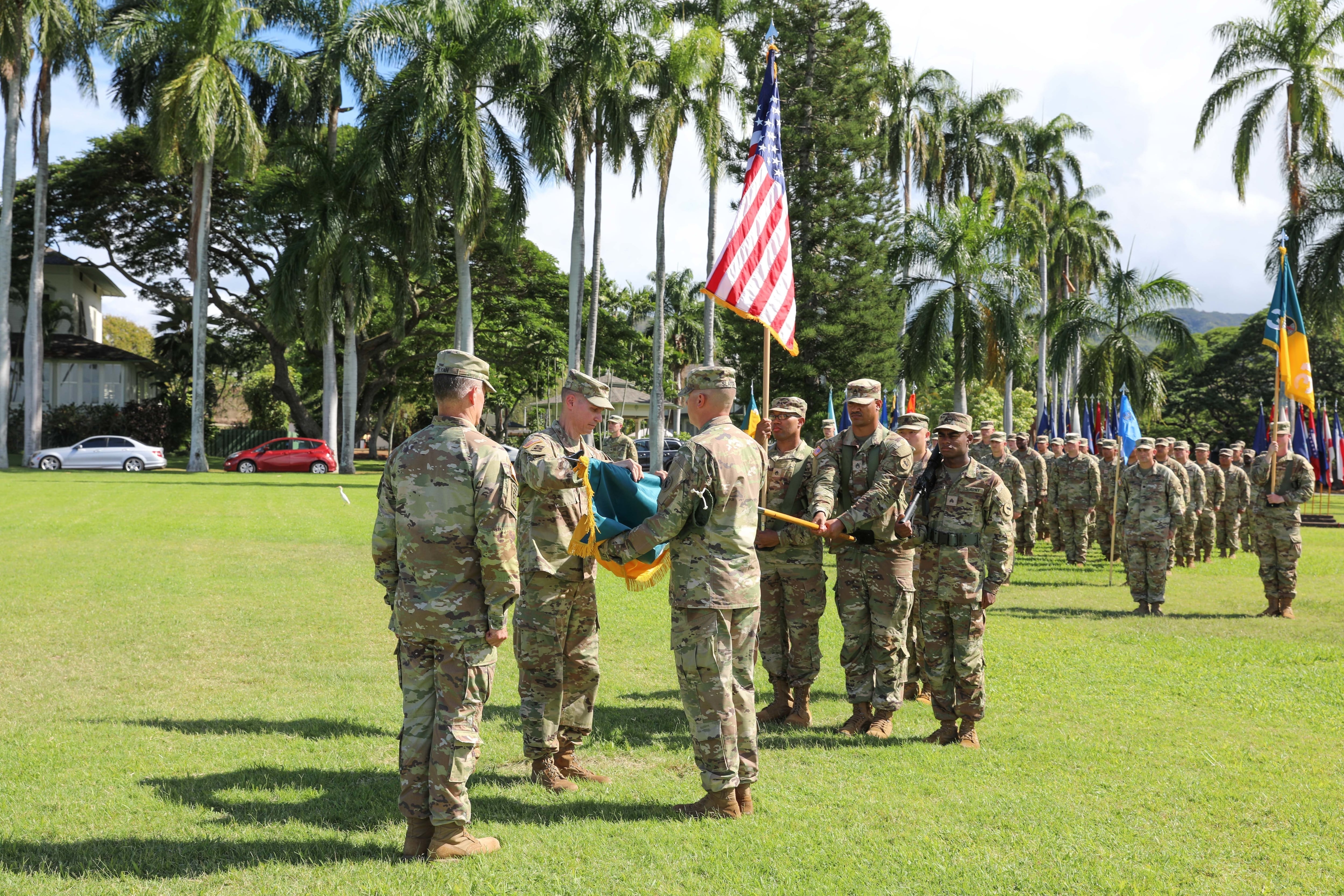WASHINGTON — The two multidomain task forces the Army has in the Indo-Pacific region now shape major joint military exercises as the Army applies its multidomain operations doctrine to the real world.
Over the past six months, the 1st MDTF deployed 16 cells across 10 time zones to support five named joint or bilateral exercises, said Brig. Gen. Bernard Harrington, 1st MDTF commander. The cells are task-organized and can be as small as a three-soldier team and as large as a company or battery.
The 1st MDTF saw its first major use during the naval exercise Rim of the Pacific in 2018. Since then, they’ve added capabilities, personnel and equipment to play a role in Orient Shield and Talisman Saber in 2019.
Early exercises put into practice what had previously been merely concepts, Harrington told an audience on Wednesday at the annual Association of the U.S. Army conference.
What that work has accomplished already is a way for the Army to establish its own “interior lines,” or forward presence, near China to push back against their protective anti-access/area denial bubble.
But they’re not doing that by massing tanks on warships along the coasts. Instead, they’re using a variety of measures — radios, radar, cyber and old-fashioned missiles — to highlight the reach of the Army and its partner forces.
Harrington noted that China has its advantages on its own turf. It has all its forces available and a deep magazine to fire offensively or in defense.
“It’s very hard to close that gap with mass and magazine depth,” he said.
In the old days, Harrington added, a unit would work up to a partner exercise, conduct the exercise and go home and wait for the next exercise. But new practices make a persistent forward presence the norm.
That presence helps build those interior lines and extend them over time.
Newly appointed commander of the 3rd MDTF, formed in September, Col. David Zinn, made a clear distinction between the MDTFs now versus the early years of their inception.
“We are not an experimental formation, we are an operational formation,” Zinn said.
Experimentation will still continue, as it did in Forager 2021, also a Pacific military exercise. That exercise saw the first synchronization of all assets — land, air, maritime, cyber, space and electronic warfare.
Then, at RIMPAC 2022 the task force fused the four things it must do to be successful — sink ships, shoot down missiles, neutralize satellites and jam an enemy’s command and control.
The force set its sights on a vessel off the coast of Hawaii during a joint ship sinking event.
Soldiers coordinated near simultaneous effects, using space assets, to shut down satellites. They used live electronic warfare attacks to jam communications. A cyber team isolated the vessel’s connection to headquarters. And then a long-range strike was launched, Harrington said.
And while they conducted that attack, a Mississippi Army National Guard unit ran air defense for the task force.
The Army has slated 1st and 3rd MDTFs for more than 15 exercises in eight countries with plans to add more than 1,400 personnel from 39 Army branches over the next year, Harrington added.
Those exercises include Project Convergence-Pacific, Northern Edge, Orient Shield, Yudh Abhyas, Tiger Balm, Balikatan and Talisman Sabre.
Also, next year, 3rd MDTF is expected to reach initial operational capability and the Army expects to field both its mid-range, 1,000 kilometer strike capability and a long-range hypersonic weapon in the region, Harrington said.
Todd South has written about crime, courts, government and the military for multiple publications since 2004 and was named a 2014 Pulitzer finalist for a co-written project on witness intimidation. Todd is a Marine veteran of the Iraq War.




